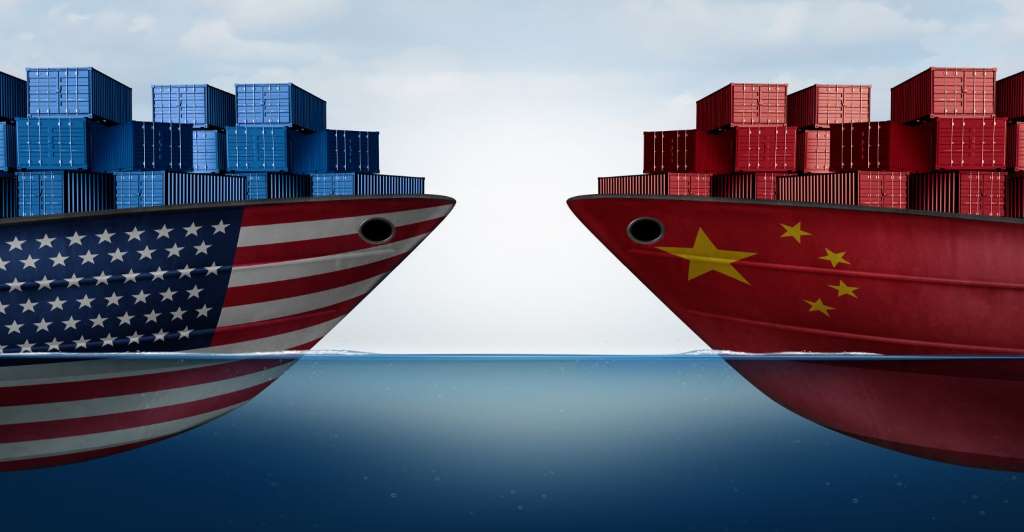
The American textile and apparel industry is facing a wave of uncertainty due to the recent announcement of tariffs and penalty clauses on imports from China. This move by the US administration has ignited a complex debate, with potential impacts on manufacturers, consumers, and China's textile exports.
Why the tariffs?
The US government cites unfair trade practices by China as the primary reason for the tariffs. These concerns include intellectual property theft, allegations of forced labor, and Chinese government subsidies that distort market prices. Proponents of the tariffs argue that they will level the playing field for American manufacturers who have struggled to compete with lower-cost Chinese imports. According to the National Council of Textile Organizations (NCTO), the US textile industry employed over 286,000 people in 2020. The hope is that these tariffs will level the playing field and create a more competitive environment. "These tariffs are a necessary step to protect American jobs and ensure fair trade practices," said a spokesperson for the US Department of Commerce.
Impact on US industry, a double-edged sword
The new tariffs are intended to level the playing field for US manufacturers, potentially leading to increased domestic production and job creation. "We believe this will create a more fair and competitive environment for American workers and businesses," stated a spokesperson for the US Department of Commerce.
However, some analysts warn that higher costs of imported materials could force US apparel companies to raise prices or source from alternative suppliers, potentially in countries with less stringent labor and environmental regulations. "While some domestic manufacturers might benefit, the overall impact on the industry could be muted," said John Draper, an analyst at investment firm AmeriTex.
American consumers are also likely to be the most directly impacted by the tariffs. Apparel prices are expected to rise, as the increased costs of imported fabrics and garments are passed down the supply chain. A 2020 study by the National Retail Federation found that tariffs on consumer goods could lead to an average price increase of 4.3 per cent. This could disproportionately affect low- and middle-income consumers who rely on affordable clothing options. "The increased costs will be passed down to consumers, who will ultimately bear the brunt of this trade war," said a representative from the Retail Industry Leaders Association (RILA).
China's shrinking American market
For China, the new tariffs represent a significant hurdle. The US is a major export market for Chinese textiles and apparel. A Grand View Research report highlights, the value of US textile imports from China reached an estimated $339 billion in 2021. These tariffs could lead to a decline in Chinese exports to the US, potentially impacting jobs and economic growth in the Chinese textile sector. "The Chinese government is deeply concerned about the US tariffs and urges them to reconsider this damaging policy," stated a spokesperson for the Chinese Ministry of Foreign Affairs.
Many small and medium-sized businesses in the US rely heavily on Chinese-made textiles and apparel. The increased costs associated with the tariffs could squeeze their profit margins and force them to adapt their sourcing strategies. Some businesses may choose to absorb the costs, while others may be forced to raise prices or look for alternative suppliers in other countries.
Imagine a basic cotton T-shirt. Currently, a large portion of these may be manufactured in China and then imported to the US. With the new tariffs, the cost of producing that T-shirt in China will increase. This could lead to:
Increased wholesale price: The Chinese manufacturer may raise the price they charge US companies for the T-shirt.
Price hike for consumers: US companies may then raise the retail price of the T-shirt to maintain their profit margins.
Shift in sourcing: US companies might explore sourcing from other countries not subject to the tariffs, though this may come with challenges like establishing new supply chains.
The long-term impact of these tariffs remains to be seen. The effectiveness of the tariffs in reviving the US textile industry will depend on various factors, including consumer spending habits and the ability of domestic producers to meet demand. Negotiations between the US and China could also lead to adjustments in the tariffs. One thing is certain: the new trade landscape will continue to have a significant impact on the global textile and apparel industry for years to come.












